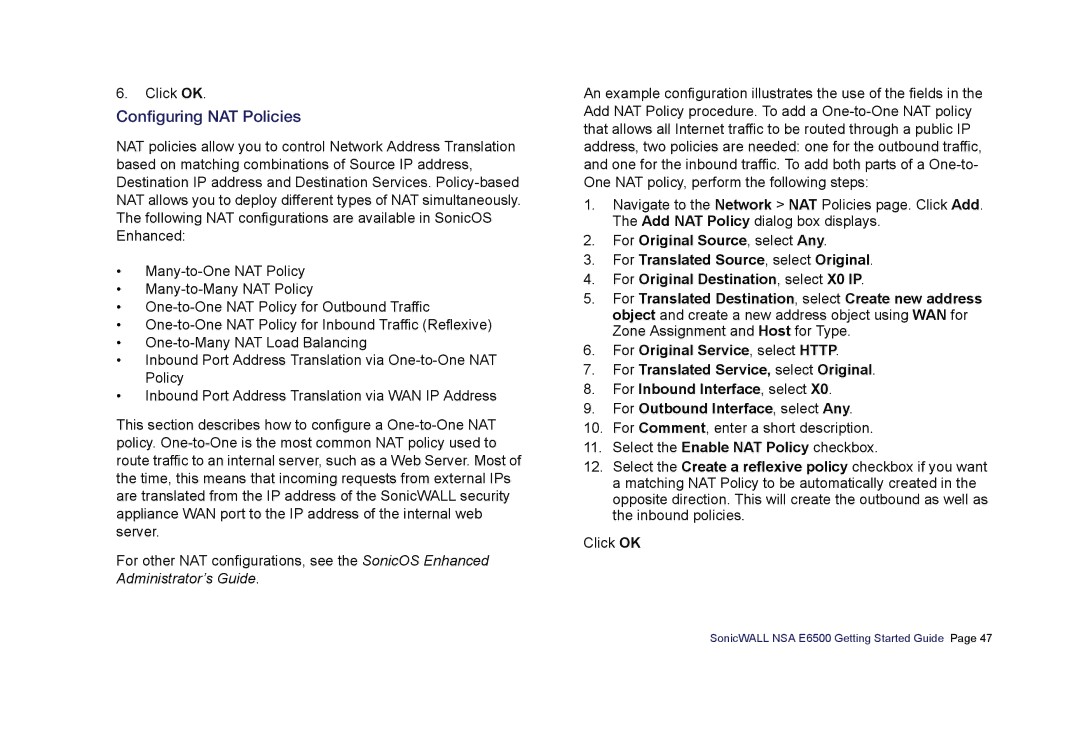6.Click OK.
Configuring NAT Policies
NAT policies allow you to control Network Address Translation based on matching combinations of Source IP address, Destination IP address and Destination Services.
•
•
•
•
•
•Inbound Port Address Translation via
•Inbound Port Address Translation via WAN IP Address
This section describes how to configure a
For other NAT configurations, see the SonicOS Enhanced Administrator’s Guide.
An example configuration illustrates the use of the fields in the Add NAT Policy procedure. To add a
1.Navigate to the Network > NAT Policies page. Click Add. The Add NAT Policy dialog box displays.
2.For Original Source, select Any.
3.For Translated Source, select Original.
4.For Original Destination, select X0 IP.
5.For Translated Destination, select Create new address object and create a new address object using WAN for Zone Assignment and Host for Type.
6.For Original Service, select HTTP.
7.For Translated Service, select Original.
8.For Inbound Interface, select X0.
9.For Outbound Interface, select Any.
10.For Comment, enter a short description.
11.Select the Enable NAT Policy checkbox.
12.Select the Create a reflexive policy checkbox if you want a matching NAT Policy to be automatically created in the opposite direction. This will create the outbound as well as the inbound policies.
Click OK
